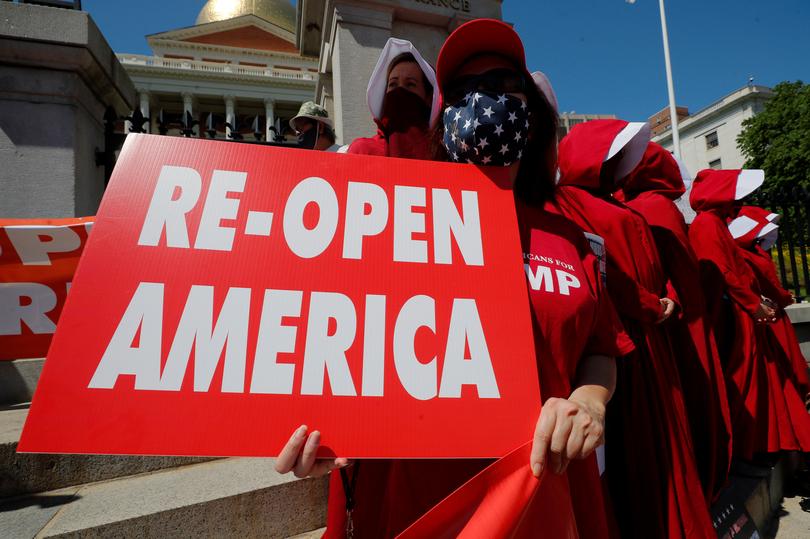
- ARAB NEWS
- 14 Jul 2025

There is no doubt that the clear and present danger of the coronavirus disease (COVID-19) epidemic has yet to fully hit many countries around the world. In those countries with a failed response to the epidemic to date, mental wellness issues are becoming more prominent.
Schools and other institutions in certain countries are only now announcing that they will be closed through to the end of the year — an action they should have announced and acted on months ago. The scientific evidence is there to prove that the lack of action against the pathogen in January and February cost the US its ability to contain and mitigate the disease. There is really no excuse for the illusionary thinking that COVID-19 will just magically go away or is some type of hoax. This episode in American history is one of fools. Americans rarely experience a real catastrophe or crisis like other places around the world, where warfare, famine and other acts of violence affect daily lives in highly disruptive ways. The result is that, in America, “Karen and Ken” don’t understand the big picture of real-world trauma and violence.
Having to deal with the anxiety caused by the current toxic mix of geopolitics and disease is a completely abnormal environment. Emotions are beginning to fray across many sociocultural fractures that have occurred during the COVID-19 epidemic. Six months-plus into the contagion — with more than a year to go — and the report card is dismal. Some societies may be able to withstand the pathogen spread, others not so much.
Mental wellness may even be applied to those who froth at the mouth across the political spectrum. “Revolutionaries” may be seen as suffering from “bloodlust” due to the opportunities of the moment to achieve what may be impossible during non-pandemic normalcy. Questions about behavior and message are increasingly intertwined to produce a Tower of Babel effect, whereby people are simply speaking in tongues, adding to the mental pressure and potential physical side-effects.
As analysts have argued, the COVID-19 pandemic and resulting economic downturn are negatively affecting many people’s mental health and creating new barriers for people already suffering from mental illness and substance abuse disorders. As the pandemic continues into 2021, it is likely the mental health burden will increase, as measures taken to slow the spread of the virus — such as social distancing, business and school closures, and shelter-in-place orders — lead to greater isolation and potential financial distress. Though necessary to prevent loss of life due to COVID-19, these public health measures expose many people to situations that result in poor mental health outcomes, such as social isolation and redundancy. Feelings of anxiety are increasingly common, as people are fearful of themselves or loved ones falling ill, and are uncertain of the repercussions of the pandemic.
After anxiety comes rage: A rage that is beginning to turn discussions into more violent confrontations. For the US, the psychological damage from how the country is changing under the Trump administration is creating a toxic narrative that is damaging to both mental and physical health. The pandemic is likely to have both long and short-term implications for mental health and substance use. Those with existing disorders and those who are newly affected will both likely require an expansion of mental health and substance abuse services in the coming years.
Domestic violence is another factor that is increasing dramatically because of the pathogen and its mental health impact. The World Health Organization reported a 60 percent increase in domestic violence in April. COVID-19 and domestic violence are effectively creating a double pandemic.
Suicide is also a major and increasingly troublesome issue based on the pandemic’s damage to society. Researchers have estimated there could be as many as 3,235 to 8,164 excess suicides in the US in the wake of the coronavirus, as a result of economic shocks, social distancing and what is described as an “unprecedented assault on mental health.” Importantly, suicide prevention services are subject to “burnout” and, given the pandemic’s longevity and viciousness, COVID-19 magnifies many of these challenges and is taxing any new resources that become available.
Six months-plus into the contagion — with more than a year to go — and the report card is dismal.
Dr. Theodore Karasik
A breaking point is coming if there are not wider efforts to reverse the growing purgatorial landscape. But few are comfortable managing the pandemic’s mental health aftermath, whether in themselves or in others, because of the nascent sense of identifying self in an act of ultimate selfishness. Even before the pandemic emerged, moral injury and burnout were rampant among clinicians. Coping with COVID-19 has magnified many of those challenges and added new ones thanks to the reality of resource constraints.
There is no doubt this pandemic will mark many Americans with psychological scars, but how big, how complex and how much they will interfere with the function of health care workers will depend on how organizations adapt. The full mental wellness impact of the coronavirus will take years to decipher, and only then can truly helpful and necessary remedies be applied. Whole communities are at stake, so the post-COVID-19 future must be clearly understood.